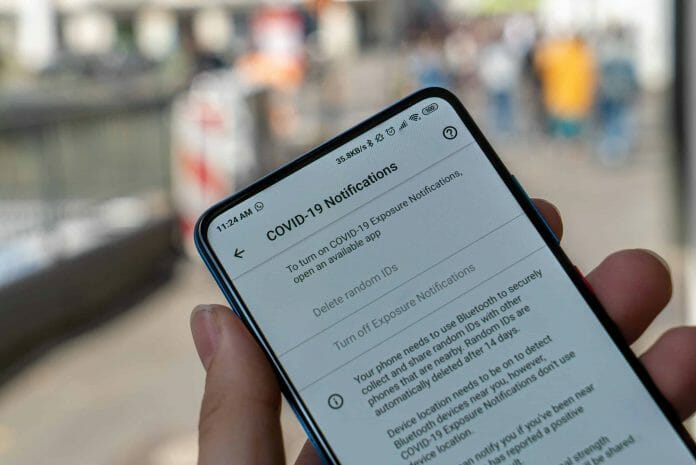By Andrew Fry, Vice President Asia, Whispir
In response to the ongoing threat of Covid-19, many nations are harnessing the power of mobile as a means of gaining critical contact tracing information. Just as critical, is the need for meaningful, two-way communication to effectively identify and investigate potential Covid-19 outbreaks in the community.
The Rise of Contact Tracing Technology
Contact tracing is not a new concept. In the fight against infectious diseases and viruses, health authorities look to tracing the lifeline of a virus as a pillar of investigation and a means to learn key findings in combating the threat. The real development in contact tracing is the advancement in digital technology as a critical tool in the effective investigation and identification of Covid-19 cases.
Across Asia and the Pacific, countries such as Malaysia, Singapore and Australia have developed and deployed contact tracing apps for citizens to install onto their devices. Software that can maintain tracking information in the event where the individual contracts the virus and enables authorities to track where the infection/ cluster originated.
Information that can mean the difference between identifying and treating a small cluster in the community or unknowingly be at the mercy of an outbreak.
Technologically Surge in the Fight Against Covid-19 for the Protection of Economic Continuity
Singapore’s TraceTogether works by devices exchanging short-distance Bluetooth signals (‘handshakes’) between individual’s devices within a small area and tags that contact. Should an individual contract the virus, health authorities can identify potential, community-spread, cases and contain clusters from becoming potential outbreaks.
Malaysia’s MyTrace app behaves similarly. Where applications installed onto mobile devices exchange proximity information between each other within a small radius, via Bluetooth, to aid health authorities in determining potential clusters of COVID-19.
Equivalently, Australia’s COVIDsafe app tracks individuals movements and tags other individuals who are within close proximity.
There are barriers in this technology, however. Some health authorities noted tracing apps on iPhones may need to be operating in the foreground of the device otherwise the Bluetooth ‘handshake’ does not occur.
Contact Tracing Use Cases in the Private Sector
Private organisations have begun to implement their own contact tracing strategies, as part of their return to work initiatives, where alternative contact tracing concepts are taking precedence. Non-app based tracing such as digital check-in systems, which leverage QR code technology, are being utilised by many in the private sector.
Two of Australia’s premium ski resorts and snowfields have deployed the technology to aid in reopening business while complying with COVIDsafe regulations.
Mt Buller and Mt Stirling have adopted a system dubbed, ‘Fast Pass’, where a unique QR code is allocated to an individual as a means to check in, booking reference and other tracing requirements.
Using ‘Fast Pass’, visitors to Mt. Buller are contacted proactively and prompted on the way up the mountain, including at snow chain stops, and in the last miles before the check-in. Users enter the contact details of everyone travelling with them, which will then send a ‘fast pass’ to everyone in the party.
The same pass can then be used at any restaurant or site where the public are allowed. Quickly checking in one or more visitors as well as capturing seating table number or site.
“This is a move to create a digital visitor record and eliminate the need for visitors to manually record all their details at the resort entrance gate and at food and beverage venues within the resorts. It means people won’t be asked to handle pens or clipboards that have been used by multiple people, which is a potential health risk.”
– Mark Bennetts, CEO, Mt Buller Mt Stirling Resort Management Board
The Key to Effective Contact Tracing: Engaging, Two-Way Communication
While we’re seeing a rise in contact tracing applications, they are but a small part of the contact tracing effort. More of a data collection tool than an investigator.
This is where software-as-a-service (SaaS) technologies like automated communications and workflow platforms take the stage. Robust and dynamic communications tools which enable government agencies and other organizations to effectively communicate and investigate is paramount to effective contact tracing.
However, it’s necessary to discern the difference between a notification platform and a genuine communications tool. To investigate contact tracing and combat Covid-19, it’s not enough to deploy a one-way notification system as a means of communication.
Within the context of crisis communication management, communicating is not about one-way telling. There’s a big difference between one-way mass notifications and personalised, meaningful engagement.
As we’re seeing with Covid-19, the situation is changing daily. Unless organisations have multiple two-way channels for structured communication (SMS, WhatsApp, Email, Voice, Web Apps and so on), they won’t have access to the real-time information needed for better decision making.
To achieve an effective crisis communications/ contact tracing strategy, it is key to employ the ten principles of crisis communication.
Ten Guiding Principles in Communicating During a Global Pandemic
- Engage across your entire community. Whether it be a known individual who has contracted the virus or members of the community who need updates on the current status of the pandemic.
- Deliver consistent, standardised and useful communications: Keep it clear and easy to respond to.
- Ensure communications are timely: The constant cadence of communication sends a very clear message of reliability.
- Ensure communications and responses are actionable: Engagement is the cornerstone of effective and genuine communication.
- Record all interactions for auditing purposes: Key communication lessons are learned in retrospect.
- Ensure your communications are secure and encrypted: The exponentially high volume of information required in contact tracing Covid-19 presents significant privacy challenges.
- Restrict access to any sensitive information: Expose the right systems to the right people to mitigate the risk of information breaches.
- Ensure your communications support engagement over multiple channels and platforms: No one person uses the same channels of communication, so a communication strategy that employs multichannel and communications workflow between channels is paramount.
- Be prepared to be flexible and quickly modify content or update: Information is continually changing and needs to remain current and accurate.
- Establish processes to ensure statutory reporting obligations are met: Not just in the interest of compliance, but a necessary principle to ensure lessons on future crises.
The consolidation of contact tracing technology and effective, two-way, engaging communications forms an effective action plan in the fight against Covid-19 and the global pandemic.
When organisations engage with people effectively, value is created. In respect to Covid-19, effective engagement means saving lives.









